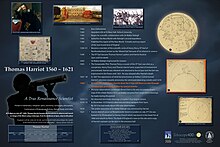Syon Park
| Site of Special Scientific Interest | |
 Lake at Syon Park | |
| Location | Greater London |
|---|---|
| Grid reference | TQ176766 |
| Interest | Biological |
| Area | 21.5 hectares |
| Notification | 1984 |
| Location map | Magic Map |

Syon Park/ˈsaɪən/is the garden ofSyon House,the London home of theDuke of NorthumberlandinBrentfordin theLondon Borough of Hounslow.It was landscaped byCapability Brownin the 18th century, and it is Grade I listed byEnglish Heritageunder the Historic Buildings and Ancient Monuments Act 1953 for its special historic interest. The 56.6-hectare (140-acre) main gardens are aSite of Borough Importance for Nature Conservation,Grade I, and the flood meadows next to theRiver Thamesare a biologicalSite of Special Scientific Interest(SSSI) and aSite of Metropolitan Importance for Nature Conservation.[1][2]
History[edit]
Syon was the site ofSion Abbey,which was founded in 1415 and named afterMount ZioninJerusalem.It was dissolved in 1539. Foundations of the abbey were discovered in 2003. Landscaping of the gardens in the middle of the eighteenth century have left them with a collection of rare trees and plants and a lake which has a population of terrapins. The Great Conservatory, built in 1826 to a design byCharles Fowler,was the first to be built out ofcast iron.[3]

In 1609,Thomas Harriotwas working at Syon when he made the first ever use of the newly inventedtelescopeto make astronomical drawings of the moon on 26 June, several months ahead ofGalileo's observations.[4]A plaque commemorating Harriot can be found in the grounds, not far from where the observations took place.
Flood meadows[edit]
The Tide Meadow next to the Thames is a 21.5-hectare (53-acre) SSSI. It is a tallwet meadowof reed-grasses, with rye-grass and meadow-grass on higher ground. There are many small ditches, and it is used by many over-wintering birds and has a number of rare invertebrate species, including uncommon flies.[5][6]
Access[edit]
Access is from Park Road. The park is open for an admission charge in the summer and closed in the winter.
See also[edit]
References[edit]
- ^"Syon Park".Greenspace Information for Greater London. 2013.Retrieved15 December2014.
- ^Historic England."Syon Park (1000148)".National Heritage List for England.Retrieved15 December2014.
- ^"Syon Park".London Parks and Gardens Trust.Retrieved15 December2014.
- ^Vandenbrouck, Melanie; Barford, Megan; Devoy, Louise; Dunn, Richard, eds. (2019).The Moon.London: Collins. pp. 82–83.ISBN978-0-00-828246-2.
- ^"Syon Park citation"(PDF).Sites of Special Scientific Interest. Natural England.Retrieved15 December2014.
- ^"Map of Syon Park".Sites of Special Scientific Interest. Natural England.Retrieved15 December2014.
